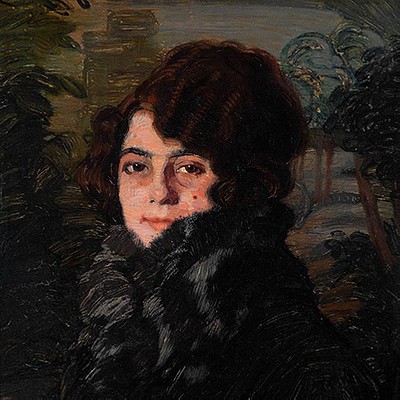French School; circa 1800. "Apotheosis of Venus". Oil on canvas.
Lot 19
About Seller
Setdart Auction House
Carrer Aragó 346
Barcelona
Spain
Setdart Subastas was born in 2004 and is currently the first online art auction in Spain with solidity, prestige and reliability guaranteed by our more than 60,000 users. Setdart has a young, dynamic and enterprising team ready to successfully manage the purchase and sale of art works through custom...Read more
Estimate:
EUR€7,000 - EUR€8,000
$7,526.88 - $8,602.15
Absentee vs Live bid
Two ways to bid:
- Leave a max absentee bid and the platform will bid on your behalf up to your maximum bid during the live auction.
- Bid live during the auction and your bids will be submitted real-time to the auctioneer.
Bid Increments
| Price | Bid Increment |
|---|---|
| EUR€0 | EUR€10 |
| EUR€200 | EUR€25 |
| EUR€500 | EUR€50 |
| EUR€1,000 | EUR€100 |
| EUR€3,000 | EUR€200 |
| EUR€5,000 | EUR€500 |
| EUR€10,000 | EUR€1,000 |
| EUR€20,000 | EUR€2,000 |
| EUR€50,000 | EUR€5,000 |
About Auction
By Setdart Auction House
Jul 15, 2021
Set Reminder
2021-07-15 08:00:00
2021-07-15 08:00:00
America/New_York
Bidsquare
Bidsquare : 19th & 20th CENTURY PAINTINGS & ORIENTALISM
https://www.bidsquare.com/auctions/setdart-auction-house/19th-20th-century-paintings-orientalism-7212
Setdart Auction House sofia@setdart.com
Setdart Auction House sofia@setdart.com
- Lot Description
French School; circa 1800. "Apotheosis of Venus". Oil on canvas. It presents important damages and losses. Size: 94 x 76 cm. In this work of mythological theme, a woman is standing in the center of the composition, naked before the viewer. Next to her, in the lower area, some satyrs contemplate the lady, highlighting the presence of a woman who is being embraced by one of the fauns, so it could be identified as a maenad. Characters belonging to the cult of the god Bacchus. The scene is completed with the presence of several little lovers holding garlands of flowers, next to the protagonist of the scene. By the disposition of the protagonist lady, as by her crown of roses, she can be identified as Venus, although the appearance of the Bacchic cult, invites to think of the figure of Ariadne, who was abandoned on the island of Naxos, where she was contemplated by the god Bacchus who fell in love with her, proposing marriage. In neoclassical art, both in painting and in the rest of the arts, there is a conflict resulting from the crossing of permanence of the baroque tradition, subtle and elegant rococo motifs and novelties that have to do with the real and the ideal world of classical models of perfection proposed by Winckelmann and collected by all. Perhaps the key to understanding neoclassicism lies precisely in Winckelmann, in his recommendations to artists to imitate the Greeks in order to become inimitable. Likewise, Diderot advised artists to "paint as they spoke in Sparta", a principle of purification and attunement that would lead to the tendency towards linear abstraction characteristic of the 1800s. In short, neoclassical painting was inspired by the Greco-Latin tradition through different points of view, adopting its principles of order, clarity, austerity, balance and purpose, often with a moralizing background. Based on rationalism, it emphasizes personal development and social progress through strong ethics, elements that blend with the growing scientific interest in classical antiquity as a result of archaeological excavations and the publication of scholarly studies on ancient art and culture. Thus, although classical art was already highly appreciated since the Renaissance, it was in a circumstantial and empirical way, but now this admiration will be built on a more scientific, systematic and rational basis.
- Shipping Info
-
In-house shipping available. Please inquire at admin@setdart.com.
-
- Buyer's Premium



 EUR
EUR CAD
CAD AUD
AUD GBP
GBP MXN
MXN HKD
HKD CNY
CNY MYR
MYR SEK
SEK SGD
SGD CHF
CHF THB
THB

















